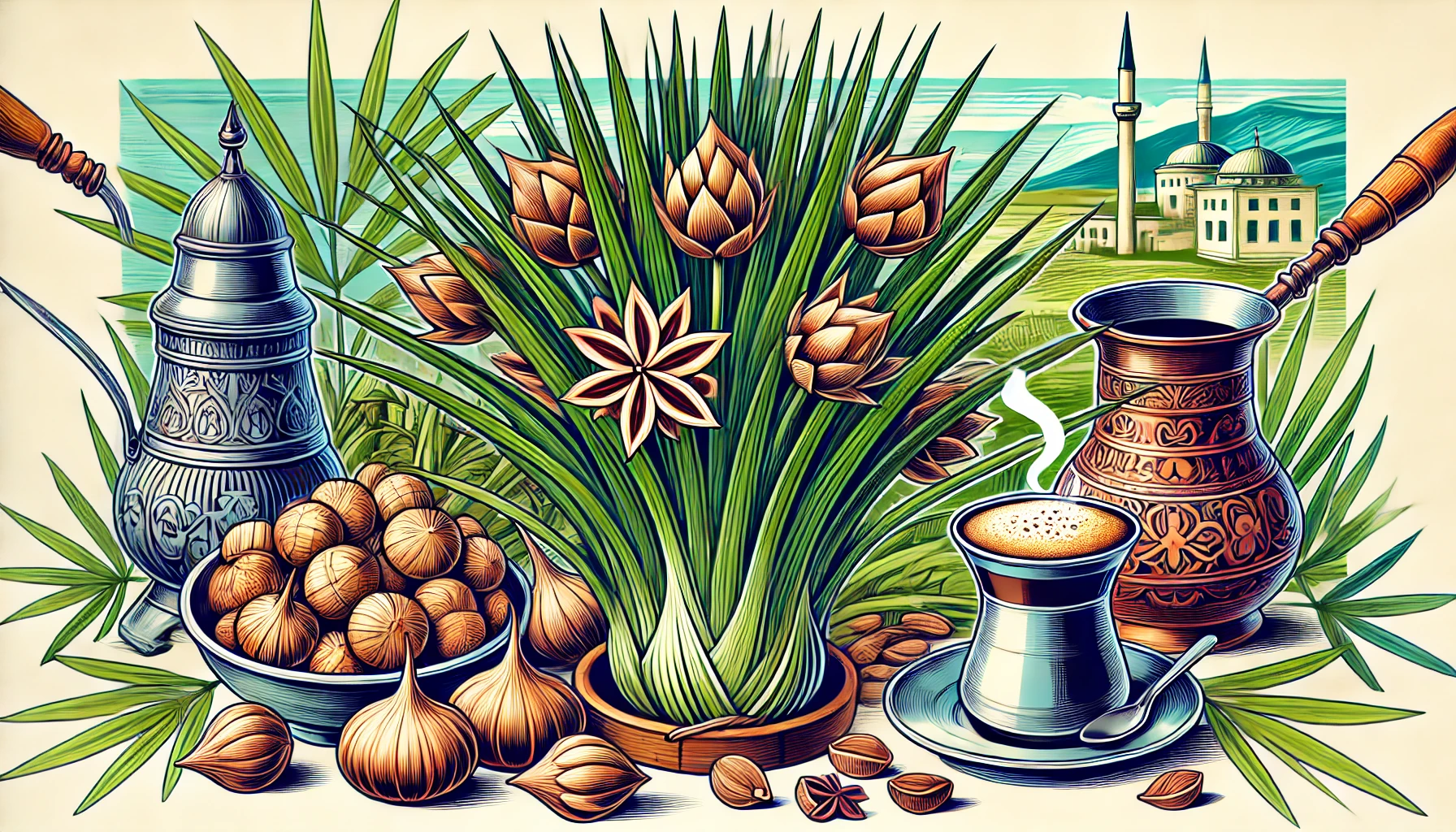In the world of culinary wonders and cultural marvels, few ingredients boast the rich history and versatility of “şeygo.” This humble plant, a wealth of tastes, health advantages, and cultural importance. Let’s dive into the fascinating world of şeygo, exploring its origins, uses, and the unique role it plays in Turkish culture.
What is Şeygo?
Şeygo, also known as Cyperus esculentus, tiger nuts, or earth almonds, is a perennial plant cherished for its small, nutty-flavored tubers. Native to regions in the East, especially Turkey and the Middle East, şeygo has earned a place in kitchens and hearts worldwide. Its slender, grass-like leaves and tiny edible tubers may look unassuming, but they pack a powerful punch of nutrition and taste.
Historical Significance of Şeygo
The history of şeygo stretches back centuries, deeply rooted in ancient civilizations. Revered for both its sustenance and medicinal properties, şeygo was a staple in the diets of our ancestors. Imagine ancient ceremonies where these little tubers symbolized fertility and prosperity—a true testament to their value and cultural significance.
In Turkish and Middle Eastern traditions, şeygo holds a special place. It is more than just a food item; it’s a symbol of abundance and communal harmony, often featured in traditional celebrations and rituals. The next time you nibble on a şeygo snack, remember, you’re partaking in a piece of history!
Botanical Features of Şeygo
Plant Description
Şeygo is a resilient plant that thrives in warm climates and sandy soils. Its slender leaves resemble grass, and beneath the surface, it produces small, edible tubers. These tubers are the star of the show, celebrated for their nutty flavor and versatile uses.
Growth Conditions
Ideal for regions with Mediterranean climates, şeygo is primarily cultivated in sandy soils found in Turkey, Africa, and parts of the Mediterranean. Its ability to grow in less fertile soils makes it a hardy crop, perfect for sustainable agriculture.
Nutritional Value
Despite its small size, şeygo is a nutritional powerhouse. Here’s what makes it stand out:
- Fiber: Aids digestion and promotes gut health.
- Vitamin E: A powerful antioxidant beneficial for skin and immune health.
- Minerals: Rich in potassium, magnesium, and iron.
These tiny tubers offer a big boost to your diet, making them a valuable addition to your meals.
Culinary Uses
Traditional Dishes
Şeygo’s nutty flavor and crunchy texture make it a popular ingredient in Turkish cuisine. You’ll find it in traditional sweets like şekerpare and refreshing beverages. Its versatility extends to savory dishes and snacks, adding a unique twist to many recipes.
Modern Recipes
In today’s health-conscious culinary world, şeygo is making waves. From gluten-free baking to innovative desserts, chefs and home cooks alike are discovering new ways to incorporate this delightful ingredient into their dishes. Ever tried şeygo flour pancakes? You’re in for a treat!
Medicinal Uses
Traditional Medicine
Historically, şeygo has been used for its medicinal properties. It was commonly employed to aid digestion, boost energy levels, and even as an aphrodisiac. Its inclusion in herbal remedies showcases its broad range of health benefits.
Current Health Benefits
Today, şeygo continues to be a staple in alternative medicine. Its high fiber content supports digestive health, while its rich nutrient profile helps bolster the immune system and improve skin vitality. Adding şeygo to your diet is a tasty way to enhance your overall well-being.
Processing and Harvesting
Harvesting Process
The journey of şeygo from soil to table involves careful harvesting. The tubers are delicately extracted, washed, and dried to preserve their flavor and nutritional content. Whether consumed fresh or processed into flour, oils, or beverages, each şeygo product retains its distinctive qualities.
Processing Methods
Şeygo can be enjoyed in many forms. From raw tubers to roasted snacks, and even as a refreshing drink, the possibilities are endless. Processing methods ensure that şeygo’s nutritional benefits are retained while offering variety for culinary creativity.
Cultural Significance
Symbolism
In Turkish culture, şeygo is more than just food. It symbolizes fertility, prosperity, and community. Including şeygo in celebrations reflects these values, making it a cultural icon as well as a culinary delight.
Festivals and Celebrations
it often stars in local festivals and ceremonies. Its presence in these events highlights its importance in bringing people together and celebrating abundance and unity.
Global Presence
Şeygo’s unique flavor and health benefits have caught the attention of food enthusiasts worldwide. From Europe to the Americas, this versatile ingredient is gaining popularity, transcending cultural boundaries and becoming a favorite in gourmet and health-conscious kitchens.
Chefs across the globe are experimenting with şeygo, integrating it into diverse cuisines. Its adaptability makes it a perfect ingredient for fusion dishes, blending traditional flavors with modern twists.
Conservation Efforts
Threats to Şeygo
Despite its growing popularity, it faces challenges. Habitat loss and climate change threaten its natural growing conditions. Sustainable cultivation practices are essential to ensure that future generations can enjoy this precious tuber.
Sustainable Practices
Efforts are underway to protect şeygo’s habitats and promote sustainable farming techniques. By supporting these initiatives, we can help preserve this valuable crop and its cultural heritage.
Brewing and Enjoying Şeygo Coffee
Şeygo also shines in the world of coffee. Known as “vegged coffee,” this special preparation of Turkish coffee is renowned for its thick, creamy foam (köpük) and intense flavor. It elevates the coffee experience to a sensory delight.
Brewing şeygo coffee is an art. Start with finely ground Turkish coffee, fresh cold water, and optionally, sugar. Heat gently in a cezve, watching for the rich foam to form. Skim off the foam, let the coffee reach just before boiling, and serve in small cups with the foam on top.
Drinking şeygo coffee is more than just a caffeine fix; it’s a cultural ritual. The careful preparation and slow savoring of each cup offer a moment of peace and connection, reflecting Turkish hospitality and tradition.
Future Prospects
Growing Interest
As global interest in diverse and nutritious foods grows, it stands poised to become a staple in mainstream cuisines and health products. Its unique properties and versatile applications ensure a bright future for this humble tuber.
Innovation and Research
Ongoing research into şeygo’s benefits and uses continues to uncover new potential. From innovative culinary applications to health supplements, the possibilities are expanding, promising exciting developments ahead.
Conclusion
In conclusion, şeygo is much more than a culinary ingredient. It is a multifaceted combination of history, culture, and health advantages. Whether you enjoy it in traditional recipes, as a modern culinary innovation, or as part of a cherished ritual, şeygo offers a delightful and nutritious experience. So, why not embark on a flavorful journey and discover the magic of şeygo for yourself?
Frequently Asked Questions (FAQs)
What does Şeygo taste like?
it has a nutty and slightly sweet flavor, reminiscent of almonds or hazelnuts.
Is Şeygo gluten-free?
Yes, it is naturally gluten-free, making it suitable for gluten-sensitive individuals.
How can Şeygo be consumed?
it can be eaten raw, roasted, or incorporated into various dishes such as desserts, beverages, and salads.
What are the health benefits of Şeygo?
it is rich in fiber, vitamins, and minerals, promoting digestive health, immune support, and skin vitality.
Where can Şeygo be found outside its native regions?
it is increasingly available in specialty stores and online markets catering to international cuisines and health foods.
Read more informative blogs on SIGHTFULBLOG.





